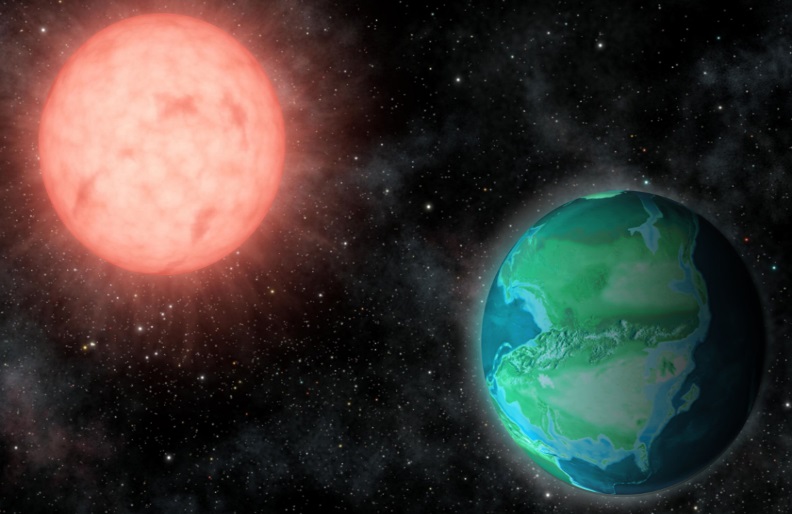A few decades ago, we didn’t know if there were any planets outside our solar system. Thanks to advances in astronomy like Hubble and the Kepler Telescope, we now know there are uncountable planets in the universe, including at least one in the solar system next door. Researchers from Cornell University are taking a closer look at that planet, known as Proxima-b to determine if it might harbor life. They believe that it very well may, and the proof they cite is Earth.
Proxima-b orbits the red dwarf star Proxima Centauri, a mere 4.24 light years away from Earth. Scientists announced the discovery of Proxima-b in 2016. It orbits its parent star every 11.2 Earth days and has a mass at least 1.3 times that of Earth, suggesting that it has a rocky surface. As a red dwarf, Proxima Centauri is smaller and cooler than the sun, so liquid water might exist on Proxima-b even though it orbits very close to the star.
Most researchers consider the presence of liquid water essential to the development of life, so Proxima-b seems like a good candidate. However, the radiation from being so close to a red dwarf would make it inhospitable to us even if there’s water. The radiation might not be a deal-breaker for the development of alien life on Proxima-b, though. Lisa Kaltenegger and Jack O’Malley-James from Cornell modeled the surface ultraviolet radiation on four prominent exoplanets: Proxima-b, TRAPPIST-1e, Ross-128b, and LHS-1140b. It turns out, Proxima-b isn’t that bad compared with Earth’s past.
The team modeled various atmospheres for these exoplanets to see how the intense solar flares from red dwarfs affect the surface conditions. As expected, greater solar flare activity eroded the atmosphere. That’s not good news for the development of life, but to quote Dr. Ian Malcolm, “Life finds a way.”
The Earth of 4 billion years ago was a rough place bathed in radiation from a much younger version of our sun. All the exoplanet models showed less surface radiation than Earth would have had at that time. Life existed on Earth, so why not on Proxima-b? Organisms on Earth employ various biological mechanisms to guard against radiation like protective pigments and enhanced DNA repair molecules. Life may currently be thriving on Proxima-b in an environment we would find quite lethal.
